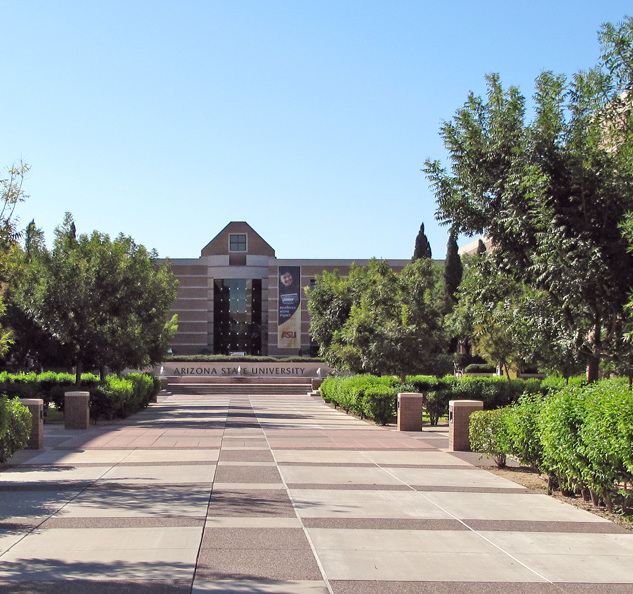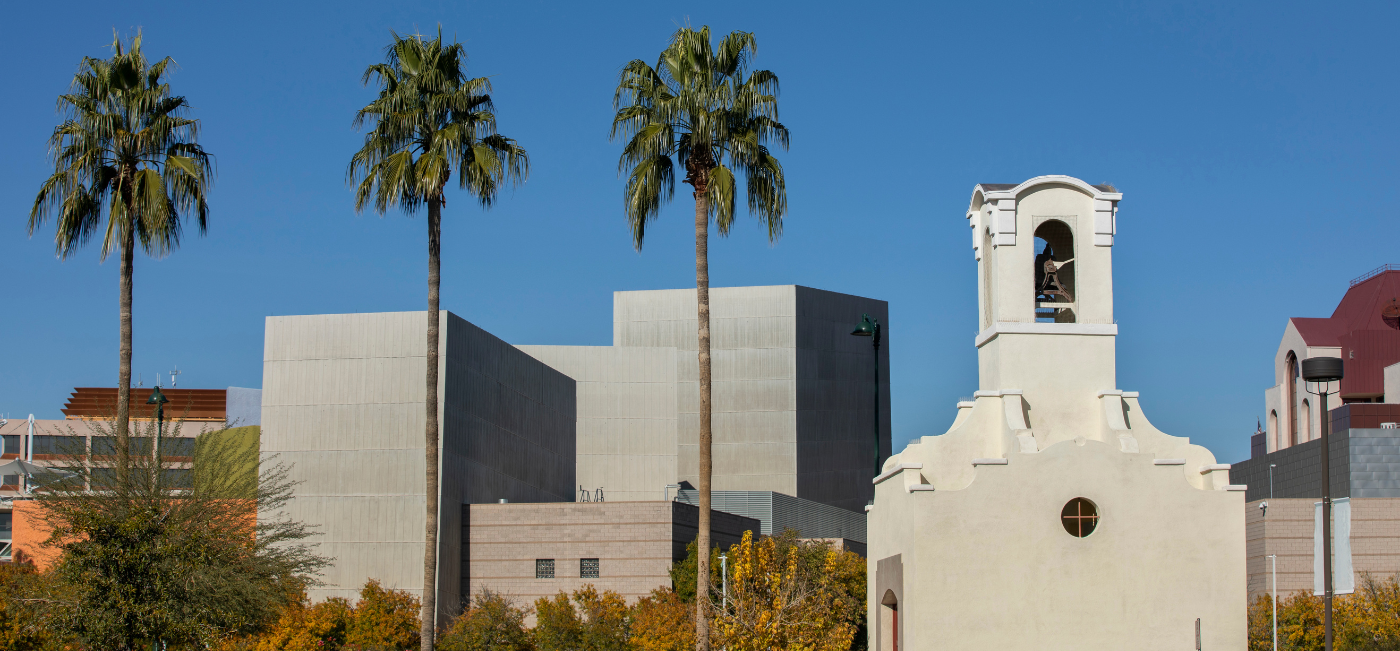Just outside the front doors of Arizona State University’s (ASU) Mary Lou Fulton Teachers College, visitors and students can find a slight reprieve from the oppressive desert sun on East Gammage Parkway. The solar panels above, known as “Power Parasols,” cast shady rectangles below, generating power and lowering the temperature by a few degrees. Inside the teacher prep school, however, they’re generating power of a different sort.
ASU’s Mary Lou Fulton Teachers College has developed a new approach to teaching that combines a fresh staffing structure with direct support for school districts. The result is a veritable powerhouse of effective teaching.
Through its Next Education Workforce model, ASU supports district leaders and teachers with transforming their schools away from the traditional one-teacher-one-classroom model toward one that emphasizes large, flexible, team-based teaching structures. ASU’s flexible models focus on creating “core teams” of educators who share responsibility for teaching large classes, often from 50 to over 100 students. This approach is designed to provide more personalized learning to students and to support educators with stronger pathways to entering and advancing within their teaching careers.
ASU recognizes the need for district support in redesigning processes, staffing, and learning environments to accommodate this new approach. To that end, ASU works directly with school systems transitioning to the model, assisting leaders to design a structure that meets their needs. This can happen in a variety of ways:
- Implementing teacher teams in particular subject areas or grade bands.
- Providing district leaders with support on shifting and redesigning their budgets to financially support differentiated teaching roles.
- Offering professional learning and coaching support to teachers and leaders working under the new model.
- Offering site visits to other districts that have successfully implemented team-teaching strategies.
ASU’s primary partner in this work is in its own backyard. Since 2019, ASU has partnered with Mesa Public Schools (MPS) to pilot the program, where it has since grown dramatically, with a presence in approximately 40–50% of schools districtwide. Facing growing staffing challenges, MPS sought innovative solutions to create a more positive work environment, aiming to retain teachers and improve student outcomes.
The university assists MPS by providing intensive support on challenges like developing schedules that support the larger class sizes and making the necessary culture shifts to sustain team structures and maintain positive, effective communication across its workforce. These types of transformational challenges are common in many of the districts where Next Education Workforce models are taking hold. As such, ASU has a deep roster of program managers and support staff that work directly with districts to provide individualized, on-the-ground support to schools, whether they are in Arizona or across the country.
Beyond working directly with participating districts and schools, ASU contributes a variety of resources to the field to bolster the capacity of leaders engaging in reimagining the teaching role. This includes hosting an annual summit uniting researchers, state and district leaders, and advocates to share best practices, as well as information sessions for educators and school leaders. Additionally, ASU provides site visits and convenings for policymakers and advocates, publishes strategic staffing research for the field, and has even developed tools like a financial calculator that creates dynamic dashboards for leaders to better understand the budgetary implications of this work.
Next Education Workforce models are expected to expand to 13 states by fall 2024. As the models grow, so do ASU’s offerings. The university is currently developing a school leadership program to support principals leading within schools that use differentiated leadership models, understanding that principal buy-in is critical to the sustainability of these models. It is also working to create low-cost micro-credential opportunities and working alongside school systems to recognize these types of credentials. These short, competency-based learning programs can be completed quickly and used to provide professional development on team-teaching and teacher-leadership related topics. The model’s growth has even created a shift in how ASU prepares its teachers. Faculty are illustrating team structures as part of the core curriculum and even co-teaching some courses themselves, proving the university is “talking the talk” behind its models.


